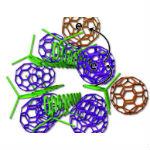 United States. A new technology developed by chemists at the University of California (Ucla) is capable of storing solar energy for several weeks, which they call a breakthrough that could change the way scientists think about solar cell design.
United States. A new technology developed by chemists at the University of California (Ucla) is capable of storing solar energy for several weeks, which they call a breakthrough that could change the way scientists think about solar cell design.
The new design is inspired by the way plants generate energy through photosynthesis. "Biology does a very good job of creating energy by sunlight," said Sarah Tolbert, a Ucla chemistry professor and one of the lead authors of the research. "Plants do this through photosynthesis with very high efficiency."
"In photosynthesis, plants that are exposed to sunlight use carefully organized nanoscale structures within their cells to quickly separate the charges — throwing the electrons away from the positively charged molecule, keeping the positive and negative charges separate," Tolbert said. "That separation is the key to making the process efficient."
To capture the energy of sunlight, solar cells on conventional roofs use silicon, a rather expensive material. There is currently a huge push to make low-cost solar cells using plastics, rather than silicon, but today's plastic solar cells are relatively inefficient, largely because separate positive and negative electric charges are often recombined before they can be converted into electrical energy.













